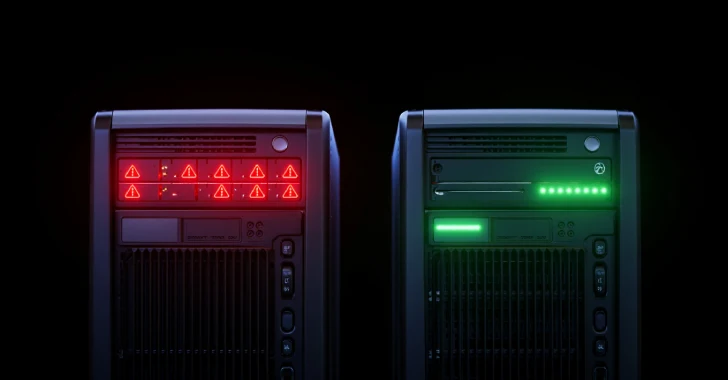
From Backup to Cyber Resilience: Why IT Leaders Must Rethink Backup in the Age of Ransomware
From Backup to Cyber Resilience: Rethinking Data Protection in the Ransomware Era
The landscape of enterprise IT faces unprecedented challenges. Downtime, once a sporadic inconvenience, is now a constant threat. Against this backdrop, the foundational concept of data backup is undergoing a radical transformation. IT leaders are discovering that mere data restoration is insufficient given the relentless pressure from evolving cyber threats, particularly ransomware. The focus is no longer solely on recovery but on maintaining operational continuity through what we now call cyber resilience.
The alarming frequency and sophistication of ransomware attacks are the primary catalysts for this shift. Ransomware-as-a-Service (RaaS) platforms, exemplified by the notorious LockBit and BlackCat (ALPHV) groups, have democratized cybercrime. These platforms enable even novice threat actors to deploy devastating attacks with ease, driving a significant increase in incidents. The sheer scale and impact of these attacks necessitate a fundamental re-evaluation of our defensive strategies.
The Evolution of the Threat: Ransomware’s Unrelenting Ascent
Ransomware has moved beyond simple data encryption. Modern ransomware tactics include data exfiltration for double extortion, sophisticated lateral movement, and the targeting of backup systems themselves. This aggressive evolution renders traditional “air-gapped” backups less effective if the threat actor has already compromised the network, exfiltrated sensitive data, and encrypted active data sets.
For instance, groups leveraging vulnerabilities like those found in unpatched applications—e.g., the exploitation of CVE-2023-38891 in WinRAR by certain ransomware affiliates—demonstrate the speed with which vulnerabilities are weaponized. This highlights the critical need for proactive security measures beyond simple data backups. Organizations must defend against threat actors who are increasingly adept at exploiting supply chain weaknesses and common misconfigurations to gain initial access.
Beyond Backup: Defining Cyber Resilience
Cyber resilience extends far beyond traditional backup and recovery. It encompasses an organization’s ability to:
- Anticipate: Proactively identify and assess cyber risks.
- Withstand: Maintain operations during a cyberattack.
- Recover: Rapidly restore systems and data after an incident.
- Adapt: Learn from incidents and continuously improve security posture.
In essence, cyber resilience is the capacity to prepare for, respond to, and recover from cyberattacks while ensuring the continuity of critical business functions. It’s about designing systems and processes that are inherently robust and can “bend but not break” under duress.
Key Pillars of a Resilient Strategy
Achieving true cyber resilience requires a multi-faceted approach:
- Immutable Backups: Data backups must be protected from tampering or deletion by ransomware. This often involves WORM (Write Once, Read Many) storage or object lock features.
- Isolated Recovery Environments: The ability to restore production environments into an isolated, clean network segment prevents re-infection during recovery.
- Automated Disaster Recovery Testing: Regular, automated testing of recovery plans identifies gaps before an actual incident. This goes beyond simple data restoration verification.
- Threat Detection and Response: Robust EDR (Endpoint Detection and Response) and XDR (Extended Detection and Response) solutions are crucial for early detection and rapid containment of threats. Continuous monitoring for anomalies and suspicious activity is paramount.
- Incident Response Planning: A well-defined, tested incident response plan is the cornerstone of resilience. This includes clear roles, communication protocols, and escalation procedures.
- Security Awareness Training: Human error remains a significant attack vector. Regular, engaging training helps employees recognize phishing attempts and follow security protocols.
- Patch Management: Diligent and timely patching of all software and systems, including operating systems, applications, and firmware, closes known vulnerability gaps. Unpatched systems are a prime target, as seen with older vulnerabilities like CVE-2017-0144 (EternalBlue), which still gets exploited by residual threats or less sophisticated groups.
Remediation Actions for Enhancing Cyber Resilience
To move from a backup-centric to a resilience-centric security posture, IT leaders should prioritize the following actions:
- Assess Current State: Conduct a comprehensive assessment of existing backup infrastructure, recovery point objectives (RPOs), recovery time objectives (RTOs), and incident response capabilities. Identify critical assets and their dependencies.
- Implement Immutable Storage: Transition to backup solutions that offer inherent immutability for critical data sets. Explore cloud-based immutable storage options or on-premise appliances with WORM capabilities.
- Establish Isolated Recovery: Design and implement an out-of-band and isolated network segment for disaster recovery. This “clean room” environment ensures that restored systems are not immediately compromised again.
- Automate DR Testing: Leverage automation tools to regularly test your entire disaster recovery process, from data restoration to application functionality. Treat these tests as real-world drills.
- Enhance Threat Intelligence & Detection: Subscribe to reliable threat intelligence feeds and integrate them into your security operations. Implement advanced threat detection solutions (e.g., SIEM, XDR) with behavioral analytics to identify novel attack techniques.
- Develop and Test Playbooks: Create detailed incident response playbooks for various ransomware scenarios. Conduct tabletop exercises and simulations regularly to refine these playbooks and train personnel.
- Segment Networks: Implement strong network segmentation to limit lateral movement of attackers. This reduces the blast radius of a successful breach.
- Regular Security Audits and Penetration Testing: Routinely engage third-party experts to conduct security audits and penetration tests to uncover vulnerabilities before attackers do. Prioritize remediation based on risk.
Conclusion: The Imperative for Resilience
The shift from simple data backup to robust cyber resilience is not merely a technical upgrade; it’s a strategic imperative. In an era where ransomware threats evolve daily, organizations can no longer afford to view data protection as just recovery. It is about maintaining operational integrity and minimizing business disruption no matter the adversary or the attack vector. By embracing cyber resilience, IT leaders can build a more secure, adaptable, and ultimately, a more enduring enterprise.





